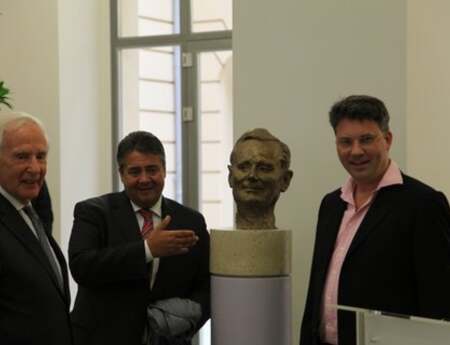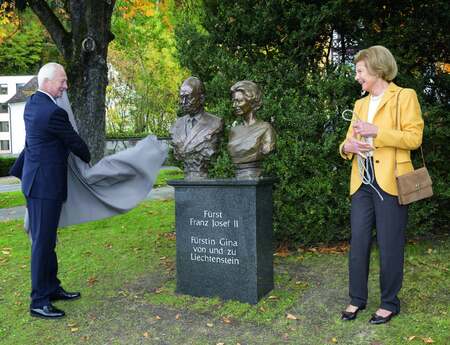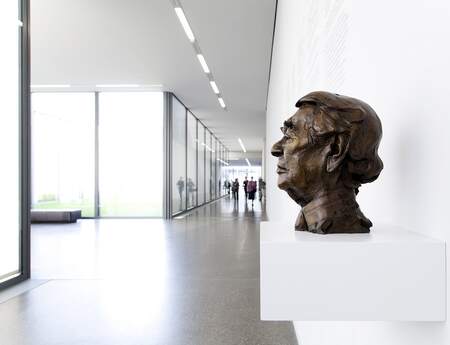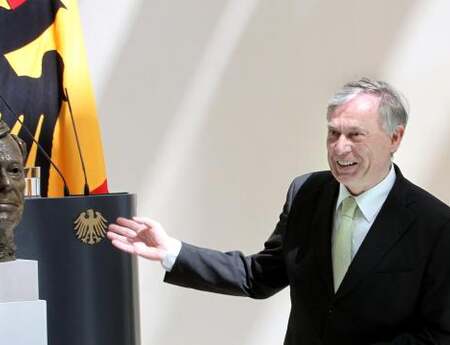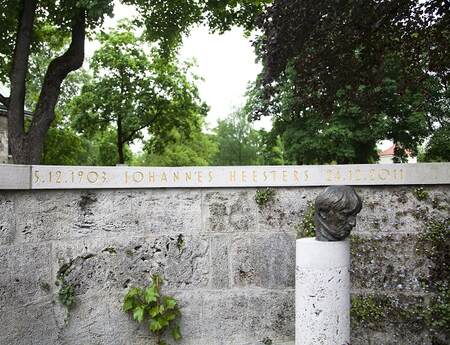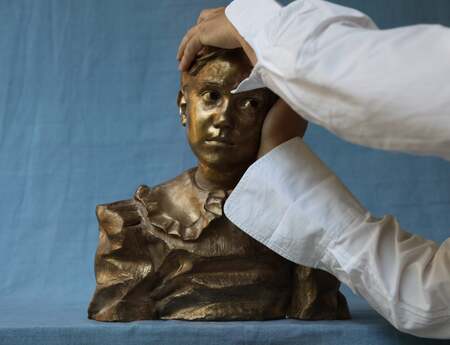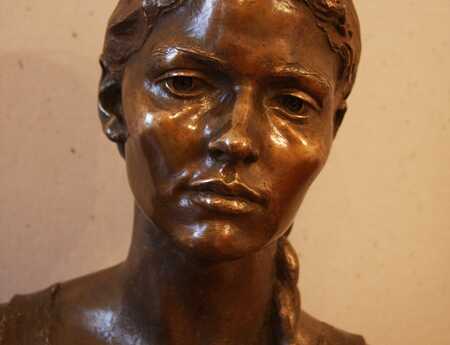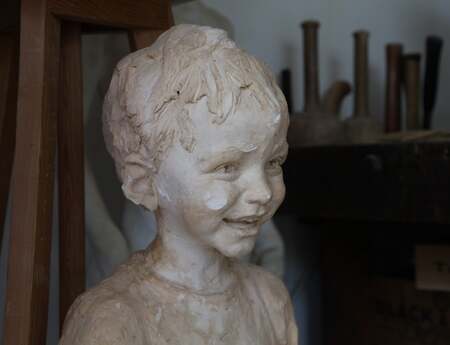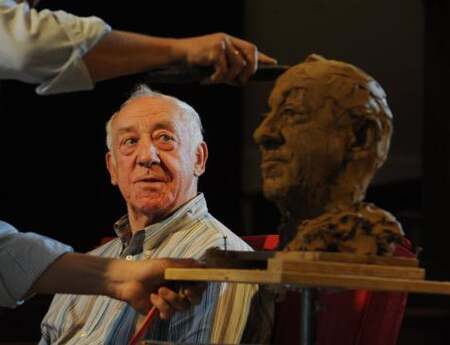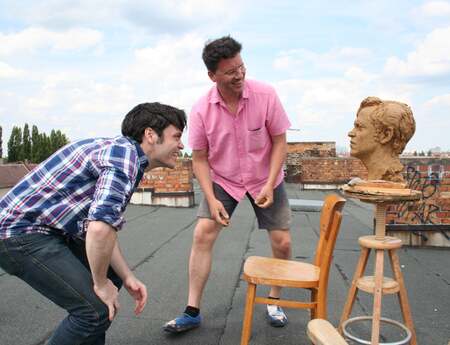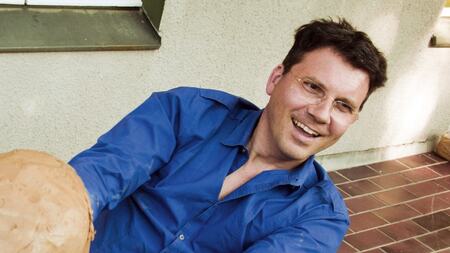
Deutschland
This is once a very sensual endeavor, and I strive for the most sublime moments. Then I'm interested in their construction, the physical forces in the enclosing skin that let us feel this sublime preciousness and gigantic power.
The sensual encounters me everywhere. I feel it most clearly when I look at all the faces around me - every day! My objects of desire! Look there, a human being! What an amazing being! I make TALKING HEADS. I am known as a portrait sculptor.
I am a historian and am very serious about people and my subject. My work is not anachronistic, but cautious, thoroughly I sound out the whole subject and meet the reality of the historical load conceptually and pragmatically. To do this, I venture and test all areas. I have to do this because I fortunately reach this clientele. I feel that I owe it to portrait sculpture. We can't skip this assignment and dangle into a future oblivious to history. No, I love this subject and want to develop it to a historical peak, gathering all knowledge and taking people and all of life for what they are to me: a sublime wonder I want to pronounce.
Even though I intuitively know where to read the emotions in the shapes of the heads and what that is for, I know ZERO about how and why they manage to do that. However, I do observe it and look for the triggers, which I then investigate. Together with my former intern Kyano Levi, I developed the Surface Investigator "SI" in the Covid19 lockdown, a software that helps to analyze and visualize the acting forces in surfaces. With this, I am generating "the geometric construction analytical notation of plastic form", the valid, intuitively readable script as the basis for the origin of our subject: plastic form as a language.
Das ist einmal ein sehr sinnliches Unterfangen, und ich bemühe mich um die sublimsten Momente. Dann interessiert mich ihr Bau, die physikalischen Kräfte in der umschließenden Haut, die uns diese sublime Kostbarkeit und gigantische Kraft spüren lassen.
Das Sinnliche begegnet mir überall. Am deutlichsten spüre ich das ständig beim Blick in alle Gesichter um mich - jeden Tag! Meine Objekte der Begierde! Sieh da, ein Mensch! Was für ein erstaunliches Wesen! Ich mache KÖPFE. Man kennt mich als Portraitbildhauer.
Ich bin Historiker und meine es mit den Menschen und meinem Fach sehr ernst. Mein Werk ist nicht anachronistisch, sondern behutsam, gründlich lote ich das ganze Fach aus und begegne der Realität der historischen Last konzeptuell und pragmatisch. Dafür wage und teste ich alle Bereiche. Das muss ich tun, weil ich glücklicherweise dieses Klientel erreiche. Ich habe das Gefühl, dass ich das der Portraitskulptur schuldig bin. Wir dürfen diese Aufgabe nicht schwänzen und geschichtsvergessen in eine Zukunft knödeln. Nein, ich liebe dieses Fach und möchte es auf einen historischen Höchststand entwickeln. Dabei kann und darf es nur um unser Wesen gehen. Ehrlich neugierig betrachte ich den Zustand eines Menschen als mein gigantisches, sublimes Wunder.
Auch wenn ich intuitiv weiß, wo die Gefühle in den Formen der Köpfe zu lesen sind, und wozu das gut ist, weiß ich NULL, wie und warum denen das gelingt. Allerdings beobachte ich das und suche die Trigger, die ich dann untersuche. Zusammen mit meinem ehemaligen Praktikanten Kyano Levi habe ich im Covid19-Lockdown den Surface Investigator "SI" entwickelt, eine Software, die die wirkenden Kräfte in den Oberflächen analysieren und sichtbar machen hilft. Damit generiere ich "die geometrisch konstruktionsanalytische Notation plastischer Form", die gültige, intuitiv lesbare Schrift als Basis für den Ursprung unseres Fachs: die plastische Form als Sprache

